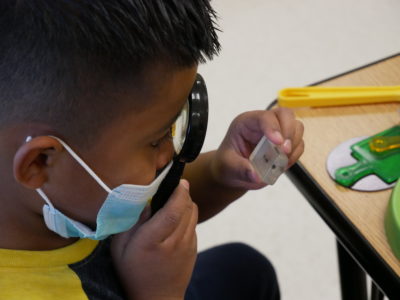
|
|
In 2019, North Carolina set an ambitious target to have 2 million workers hold a postsecondary credential by 2030. While the state has made progress towards this goal, the multiple crises caused by the pandemic — including on student learning and engagement, enrollment in college, and mental health — threaten the state’s ability to sustain its momentum.
As evidence emerges that K-12 students are beginning to recover academically, North Carolina should redouble its attention on the transition to college. The state can do so by investing in efforts to increase participation in its dual-enrollment program, the Career and College Promise (CCP).
Research shows that dual-enrollment helps students learn about, prepare for, and enter college. Earning college credits in high school can also create significant cost savings for students and their parents. Because of these benefits, dual-enrollment has garnered widespread bipartisan support, with programs expanding across the U.S.
The CCP is already a very successful program, with more than 30% of high school graduates each year taking at least one dual-enrollment course. However, the program could reach even more students.
CCP participation may be limited by a lack of student awareness about the program, financial barriers, and eligibility restrictions. To address these issues, North Carolina should consider: 1) ensuring that school counselors have the time and resources to speak with all students about the program and its eligibility requirements; 2) providing funds to cover costs of student fees, textbooks, and transportation to CCP courses; and 3) expanding eligibility to reach more high school students who are ready for college coursework.
Increase awareness of the CCP
A report published this past year found that many students do not participate in the CCP simply because they are not aware of the program until too late. This means that increasing participation may require as little as ensuring that all students know about the program and what they need to do to participate by the time they enter high school.
One reason for this awareness gap may be that counselors and administrators who are overburdened with other responsibilities are not always able to provide timely college and career guidance to all students. To address this, the state could dedicate more resources to support school guidance counseling services with the goal of ensuring that all students can meet with a counselor regularly to develop a personalized high school and postsecondary plan, which would include discussion of how CCP participation could fit into the student’s plan.
Provide funding for student fees, transportation costs
The same report found that many students who want to participate in the CCP also encounter logistical and financial barriers to entry. Many students have trouble fitting college courses into their schedules, paying for books and fees, and securing transportation to CCP courses, especially in rural and lower-income areas.
The state could alleviate this barrier by allocating funding to districts to cover costs of textbooks, fees, and transportation to and from college campuses. Doing so would likely not only increase participation overall, but also increase geographic, racial, and socioeconomic diversity in CCP participation.
Expand program eligibility
Finally, to get more students motivated, engaged, and ready for college, the state should give more students a chance to push themselves to accumulate and demonstrate college readiness. One way to do so would be to expand CCP eligibility.
Currently, students must have a 2.8 GPA or pass a placement exam to be eligible for the program. This is to ensure that students are not pushed into college-level courses when they are not ready, as this could lead to poor performance that reduces a student’s confidence and leaves a permanent mark on their transcripts.
However, many experts suggest that states could loosen requirements while still mitigating these risks. One option would be to allow students to take courses in specific areas where they have demonstrated readiness. For example, a student with a high English GPA but low math GPA could participate in a dual-enrollment humanities pathway, while CTE concentrators could progress into aligned dual-enrollment CTE courses.
The state could also reward student growth by making eligibility based on either a student’s cumulative or most recent annual GPA. This would benefit students who struggled with the transition to high school in 9th grade, but improved in 10th and 11th grade. This is likely to be especially important in the near term due to COVID’s short-term impacts on student GPAs.
North Carolina has set a key goal to make sure its students and workforce have the skills needed to compete, innovate, and lead in the coming decades, but the pandemic dramatically reshaped students’ educational needs in ways that make this goal harder to achieve.
Fortunately, the state has a strong leg to stand on to get on track. Small but important refinements to the Career and College Promise would go a long way toward ensuring that more students can benefit from this program, helping to boost college enrollment and completion in the wake of the pandemic.




